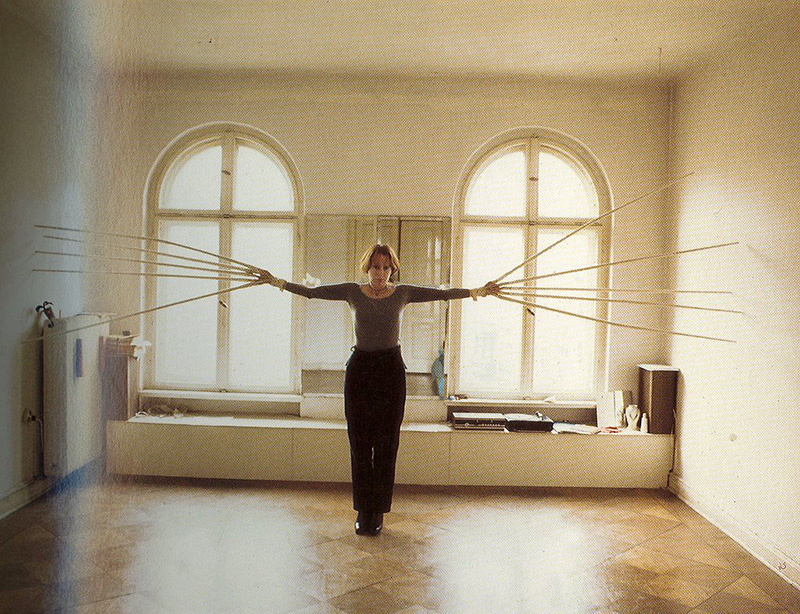http://www.tate.org.uk/art/artists/rebecca-horn-2269
Rebecca Horn

Rebecca Horn was born in March 1944 in Michelstadt, Hesse. She is a German visual artist who is best known for her installation art, film directing and her unique body modifications. She practices body art using different medias such as performance art, installation art, sculpture and film. She writes poetry as well, which she sometimes uses to influence her work.
In 1968 Horn produced her first body sculpture where she attached objects and instruments to the human body. She used the theme of the context between a person and his or her environment. Einhirn (Unicorn) is one of Horn’s best known performance pieces. The subject of this piece is a women who is described by Horn as “very bourgeois”. The subject walks through a field and forest on a summer morning wearing nothing but a white horn from the top of her head. The image below is from the film that Horn produced from the project “Unicorn”. 
Horn also created many sculptures over her career. She explores feathers in her works of 1970’s and 1980’s. Many of her feathered pieces contain a figure wrapped in the manner of a cocoon to cover or imprison the body. In the 1990’s a series of her sculptures was presented in places of historical importance. Here are images of some of the sculptures that Horn created.


Rebecca Horn had a difficult life when growing up. Her parents sent her to boding school as a child to study economics however Horn desperately wanted to study art. She rebelled against her parents and in 1963 attended the Hamburg Academy of Fine Art. Horn’s troubles were still not over because a year later after joining art school she had to pull out due to severe lung poisoning. This is how Horn describes her experience, “In 1964 I was 20 years old and living in Barcelona, in one of those hotels where you rent rooms by the hour. I was working with glass fiber, without a mask, because nobody said it was dangerous, and I got very sick. For a year I was in a sanatorium. My parents died. I was totally isolated.” Horn also experienced severe isolation. She felt like her life was over before it had even begin. When Horn walked out of the hospital she was still to ill to carry on with school. She started creating sculptures and strange extensions using wood and cloth. “I began to produce my first body-sculptures. I could sew lying in bed.” Her goal then was to quash her “loneliness by communicating through bodily forms.”
I decided to look at Rebacca Horn as one of my Historical photographers because she uses a lot of her past experiences, such as her poor health and her loneliness as a stimulate for her work. Similar to many women during Horn’s period, she had to go against her parents and people around her to do what she truly wanted to achieve in life. By becoming a women artist and photographer, Horn was one of many who helped with the progression of women. She used women as the subject for her work, however her perspective was from a women’s point of view and therefore her creative and female perspectives become prominent.

